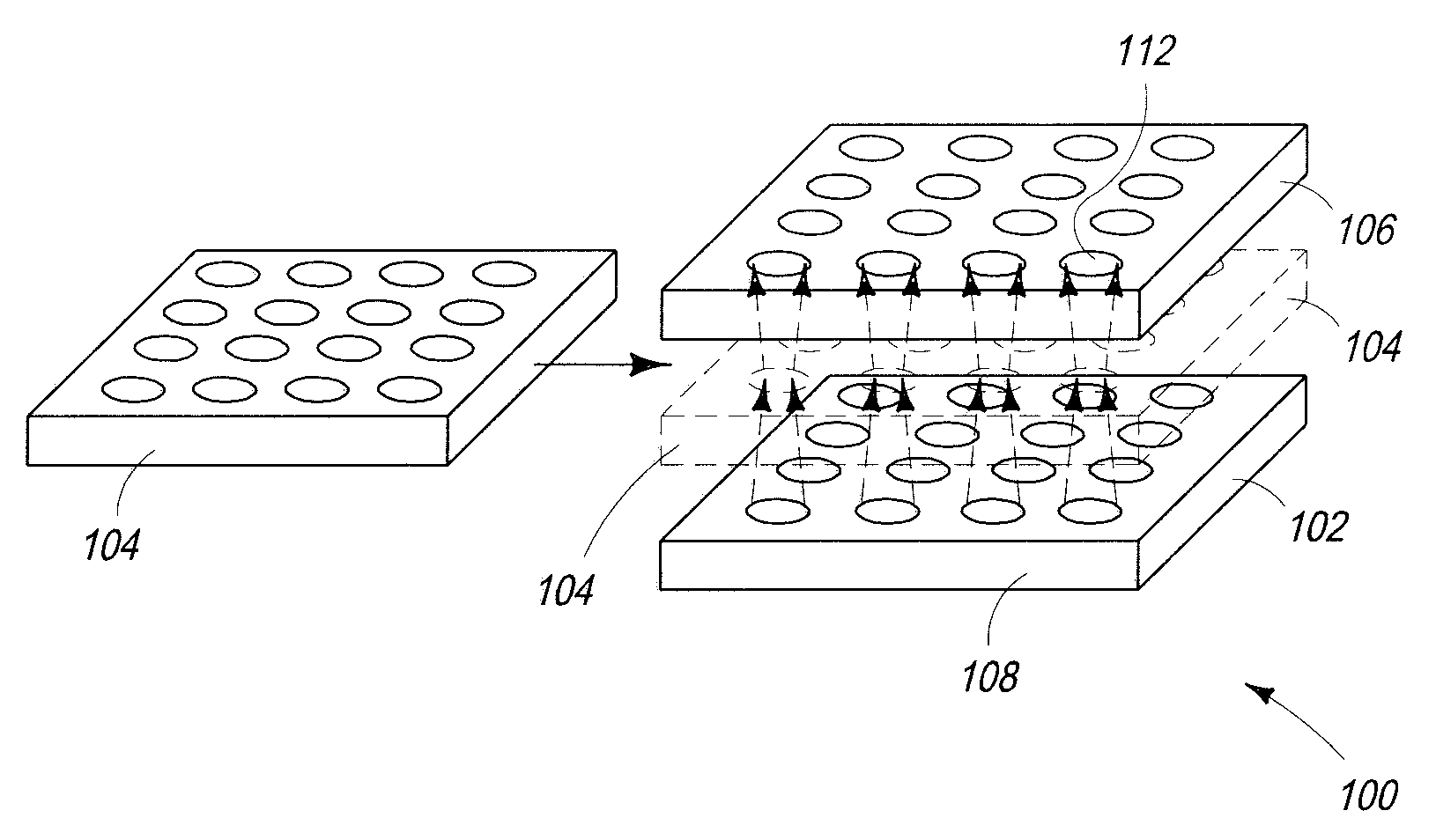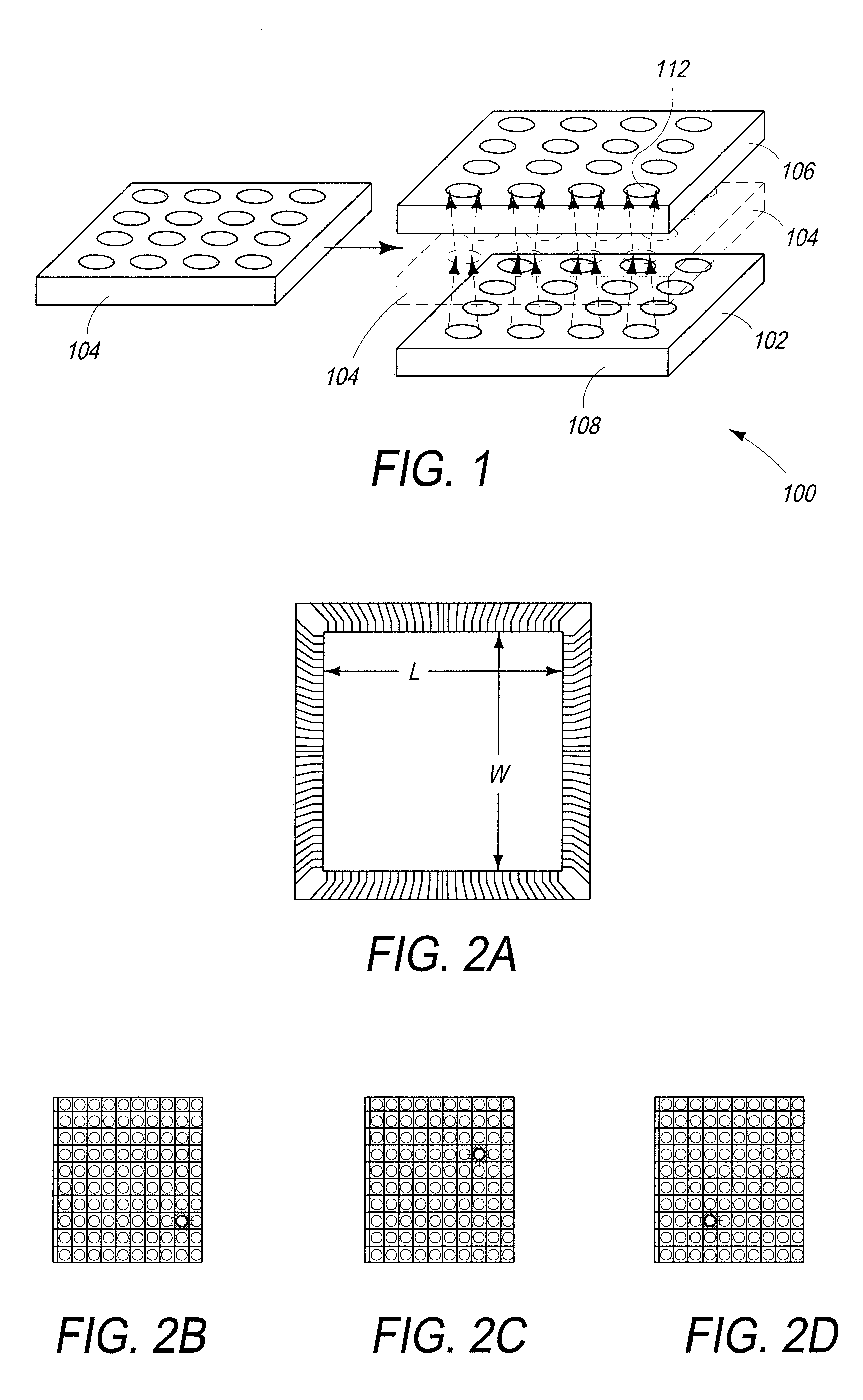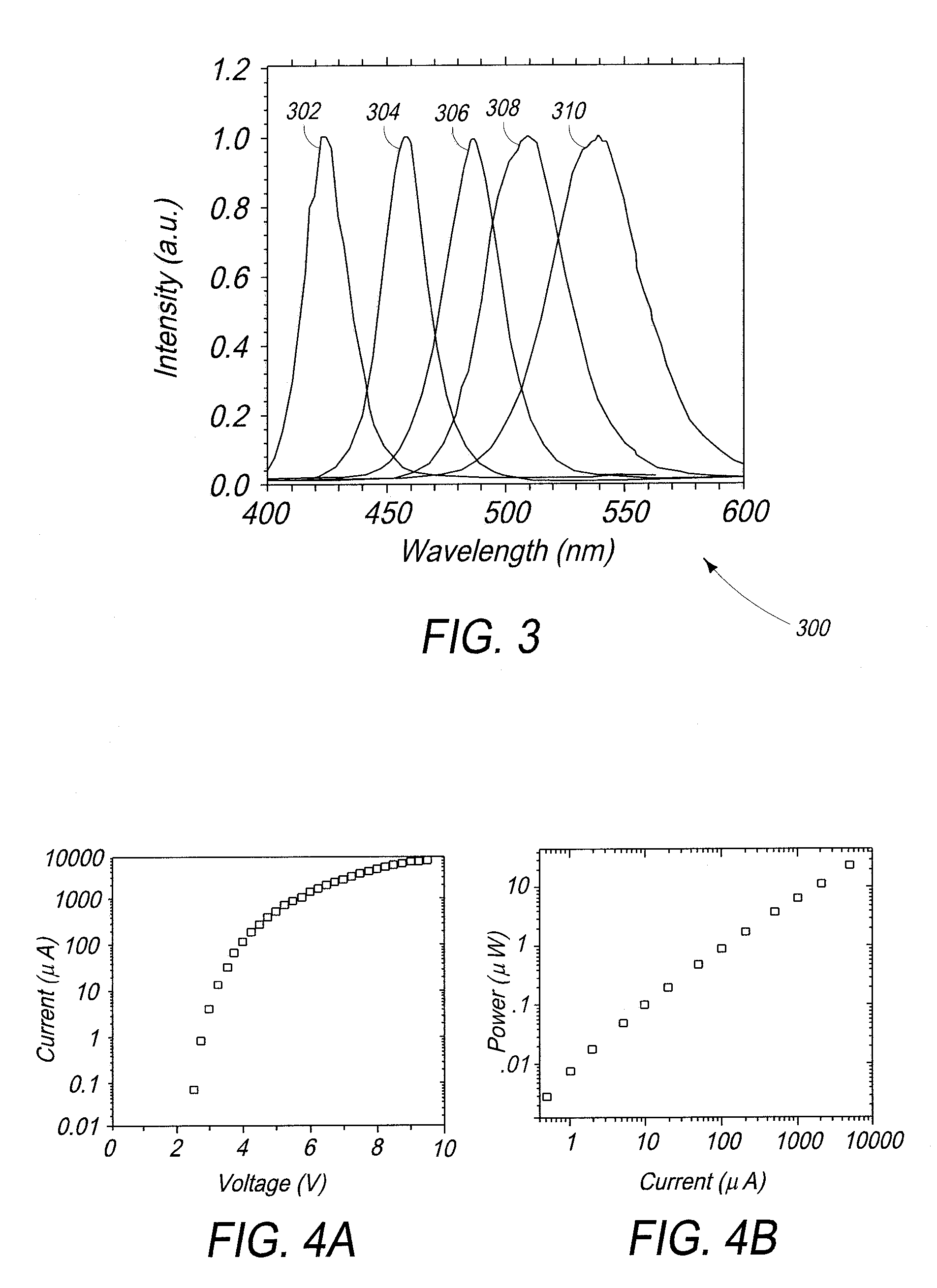Biological Sensor System
a biosensor and sensor technology, applied in the field of biosensor systems, can solve the problems of high cost, inconvenient operation, and inability to fully scan an entire microarray, and achieve the effect of high cos
- Summary
- Abstract
- Description
- Claims
- Application Information
AI Technical Summary
Benefits of technology
Problems solved by technology
Method used
Image
Examples
embodiment 800
[0047]Referring to FIG. 8, yet another sensor embodiment 800 is shown. In this embodiment, discrete samples of biological material to be tested, e.g., sample tagged DNA or protein sequence 802, are deposed directly (e.g., printed) onto each individual micro-emitter, e.g., emitter 804. In this embodiment, an InAlGaN micro-emitter array is fabricated onto a sapphire, silicon, or silicon carbide substrate used. Like in past embodiments, each emitter (e.g. micro-emitter 804) and sample (e.g., biological material 802) is associated with and caused to be located directly underneath a particular detector in a detector array or CCD pixel 808 which are a component of an ROIC 810. The micro-emitter array used here has essentially the structures as those described for the embodiments of FIG. 6 or FIG. 7. The FIG. 8 device is different from the FIG. 6 and FIG. 7 embodiments in that the replaceable DNA or protein microarray substrate is removed, and the sample array is directly formed on the top...
embodiment 900
[0048]Referring to FIG. 9, an embodiment 900 is disclosed in which the DNA or protein micro-array (not shown, but at positions 902) is directly constructed onto or into a sapphire substrate 904. The micro-emitter array 906 in this embodiment is deposed onto the saphire substrate 904, then flipped relative to the detector / CCD array on the ROIC 908. Thus, the micro-emitter array and its driving circuit are enclosed with only the sapphire substrate backside exposed. In embodiments, this backside has etched wells 902 used for DNA or protein attachment. The enclosure of micro-emitter array ensures that the illumination features will not be exposed to the materials introduced, and therefore, that the sapphire surface will be reusable. The micro-emitter array 906 here has the same structures of the embodiments of FIG. 6 or FIG. 7. The difference here is that the replaceable DNA or protein microarray substrate is removed, and the sample array is directly formed on the reverse side of the tr...
PUM
 Login to View More
Login to View More Abstract
Description
Claims
Application Information
 Login to View More
Login to View More - R&D
- Intellectual Property
- Life Sciences
- Materials
- Tech Scout
- Unparalleled Data Quality
- Higher Quality Content
- 60% Fewer Hallucinations
Browse by: Latest US Patents, China's latest patents, Technical Efficacy Thesaurus, Application Domain, Technology Topic, Popular Technical Reports.
© 2025 PatSnap. All rights reserved.Legal|Privacy policy|Modern Slavery Act Transparency Statement|Sitemap|About US| Contact US: help@patsnap.com



